Scaffolding Companies Luzerne
Find Construction Scaffolding in Luzerne
Receive multiple Scaffolding Solutions quotes for your project today! Compare profiles, reviews, accreditations, portfolio, etc... and choose the best offer.
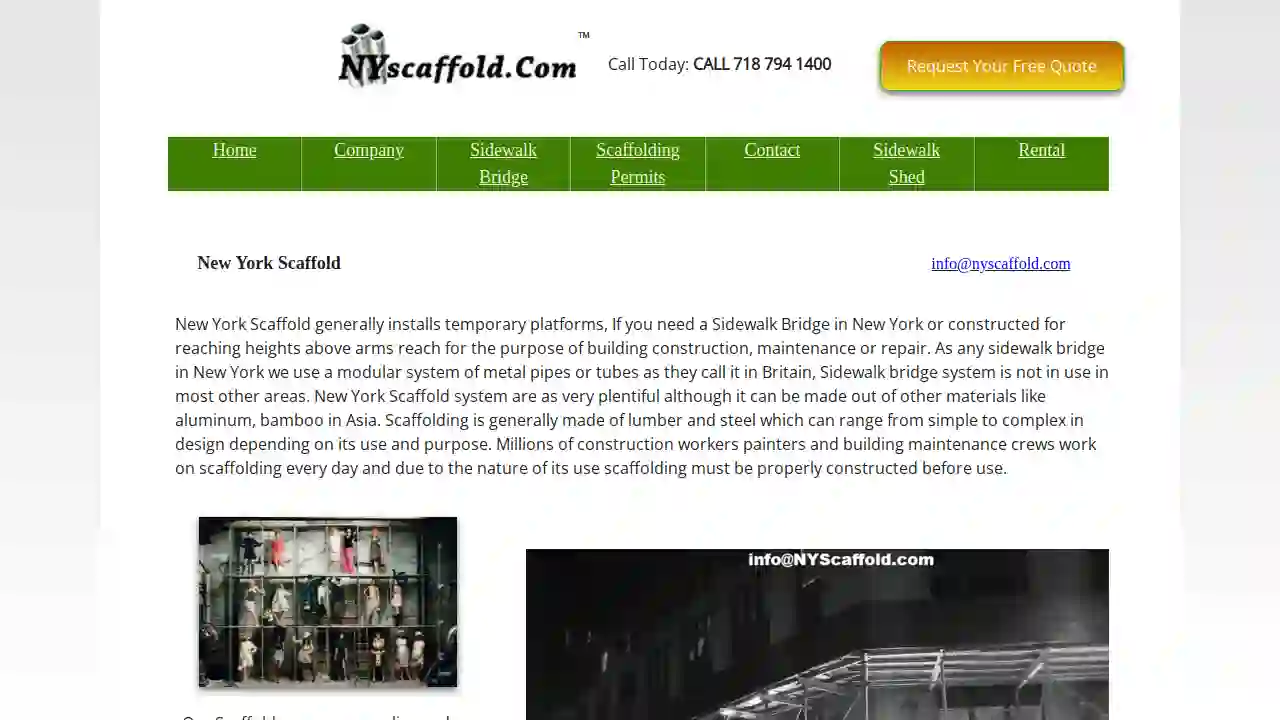
NY Scaffold
51 reviewsYork, USWe are national scaffold contractors and scaffolding erectors. Experienced NY Scaffold erectors can provide a range of access services for you or your clients, we also take care of any and all NYC DOB Permits. Large and small projects; industrial, commercial and domestic sectors can hire the services of NY Scaffold erectors. No job is too big or too small for us and we have grown our business in the last few years to become one of the leading erectors of scaffolding and sidewalk bridges in the NYC area. Plan your project with complete confidence the sidewalk bridge company NYC can erect scaffolding to all types of structures. NYC installs scaffolds from access towers to bridges and any other type of access equipment that your firm might require. It does not matter how big or how small your project is NY scaffold company NYC will cater to your needs. They have secure access equipment that is perfect for projects in and around the region. Our Scaffolding has several unique safety features that benefit the system’s erectors, users and project inspectors. With eight completely variable component node points and the largest available bay sizes, Our Scaffolding offers the most flexible system. Only five main components are required for basic use and the only erection tools required are a hammer and level. The system’s optimum design offers a high load rating and extreme rigidity, keeping your workers secure and productive. NY Scaffold is the leading specialty Scaffold Erector Company covering the whole of the US. We are totally focused on customer satisfaction and pride ourselves on the range of services we provide, We have 95% repeat business on an ongoing basis. NY Scaffold is fully self-sufficient and one the largest stockholders of the sidewalk bridge system within the US. This forms the basis of the NY Scaffolds motto safety speed efficiency. Our business is based around the materials that are stored in bins and are loaded by forklift in our yards and unloaded on site by our Truck mounted Booms. We deliver our scaffolding equipment to your site, and our team of experienced erectors will set it up for you, ensuring that your project is completed safely and efficiently.
- Services
- Why Us?
- Gallery
Get Quote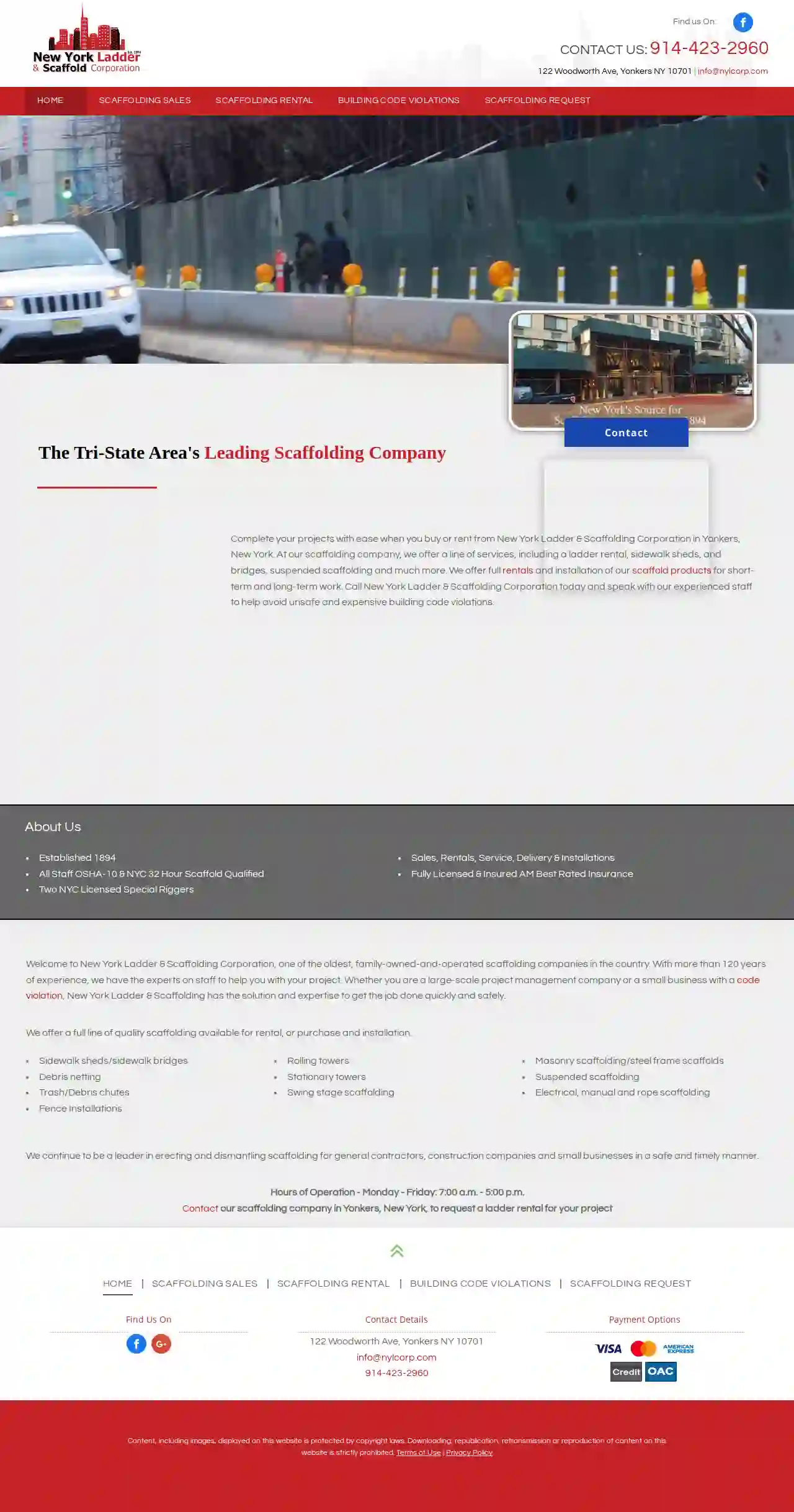
New York Ladder & Scaffold Corporation
46 reviews122 Woodworth Ave, Yonkers, 10701, USWelcome to New York Ladder & Scaffolding Corporation, one of the oldest, family-owned-and-operated scaffolding companies in the country. With more than 120 years of experience, we have the experts on staff to help you with your project. Whether you are a large-scale project management company or a small business with a code violation, New York Ladder & Scaffolding has the solution and expertise to get the job done quickly and safely. We offer a full line of quality scaffolding available for rental, or purchase and installation. Our services include sidewalk sheds/sidewalk bridges, debris netting, trash/debris chutes, fence installations, rolling towers, stationary towers, swing stage scaffolding, masonry scaffolding/steel frame scaffolds, suspended scaffolding, electrical, manual and rope scaffolding. We continue to be a leader in erecting and dismantling scaffolding for general contractors, construction companies and small businesses in a safe and timely manner. Our hours of operation are Monday - Friday: 7:00 a.m. - 5:00 p.m. Contact our scaffolding company in Yonkers, New York, to request a ladder rental for your project.
- Services
- Why Us?
- Accreditations
- Gallery
Get Quote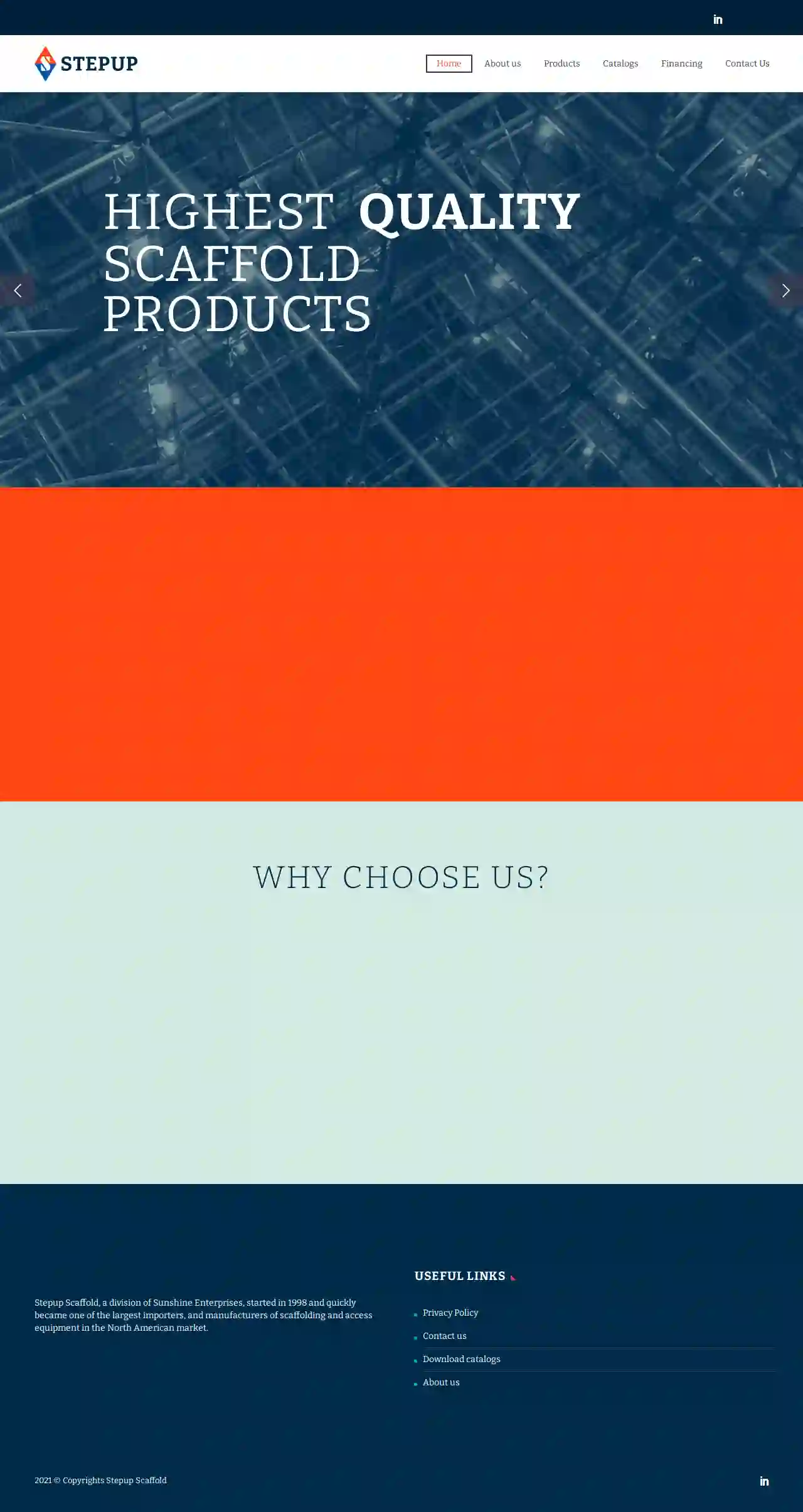
StepUp Scaffolding Warehouse - NY Branch
4.426 reviews1234 NW 12th St, Miami, 33122, USStepup Scaffold, a division of Sunshine Enterprises, started in 1998 and quickly became one of the largest importers and manufacturers of scaffolding and access equipment in the North American market. Our commitment to Quality, Service, and Satisfaction influences everything we do. We believe that a high tide raises all boats, so to raise everything and everyone, our statement of purpose, simply put is that “We elevate our employees, customers, and industries to safely move, build, and maintain the world.”
- Services
- Why Us?
- Accreditations
- Our Team
- Testimonials
- Gallery
Get Quote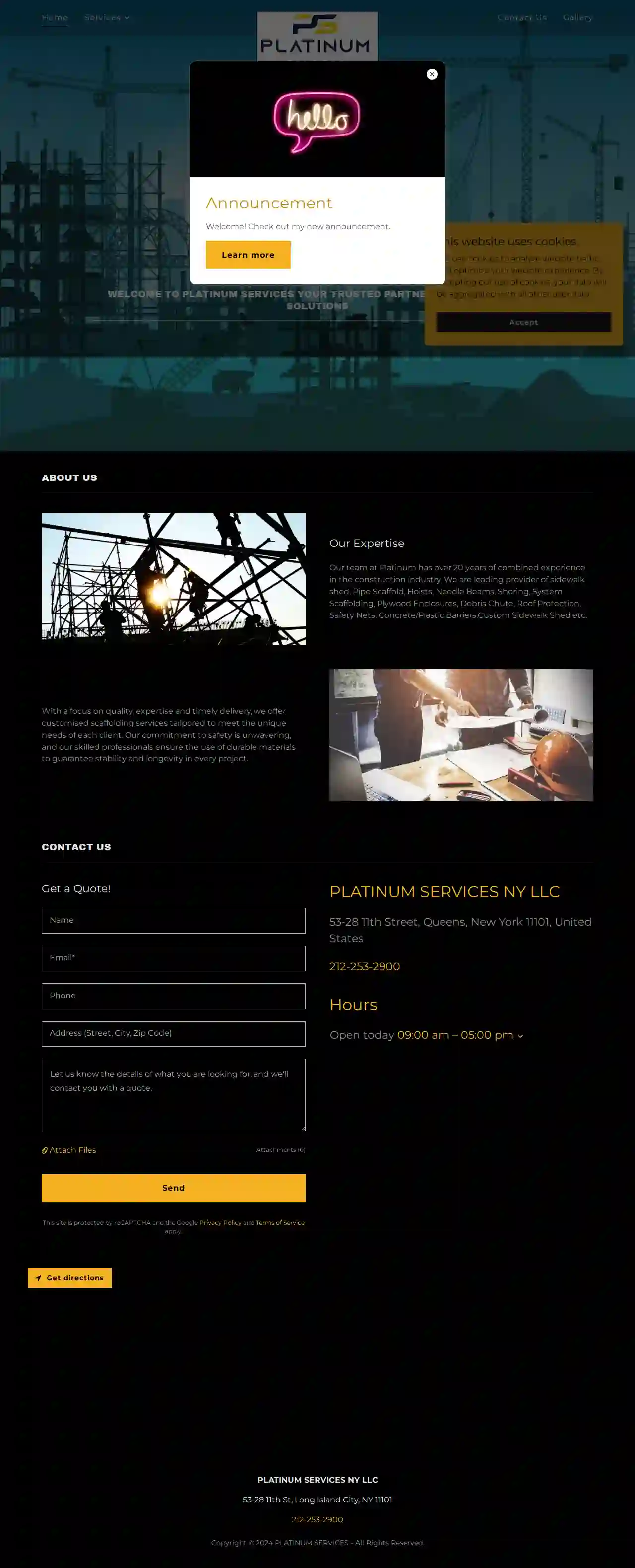
Platinum Services
34 reviews53-28 11th St, Long Island City, 11101, USWelcome to Platinum Services, your trusted partner in scaffolding solutions. With over 20 years of combined experience in the construction industry, our team at Platinum has the expertise to provide customized scaffolding services tailored to meet the unique needs of each client. Our commitment to safety is unwavering, and our skilled professionals ensure the use of durable materials to guarantee stability and longevity in every project. We offer a range of services, including sidewalk shed, Pipe Scaffold, Hoists, Needle Beams, Shoring, System Scaffolding, Plywood Enclosures, Debris Chute, Roof Protection, Safety Nets, Concrete/Plastic Barriers, and Custom Sidewalk Shed. Contact us today to get a quote and learn more about our services.
- Services
- Why Us?
- Gallery
Get Quote
Kings Group NY Corp
51 reviews120-5 Atlantic Ave, Suite #2, Richmond Hill, 11418, USAt Kings Group NY, we prioritize Safety and Quality in every project we undertake. Our mission is to ensure that our clients receive the best possible service, from the initial consultation to the completion of the project. With a team of experienced professionals, we provide top-notch scaffolding services to contractors, construction managers, developers, and building owners. Our organization is committed to meeting project budgets, schedules, and daily safety codes, and we take pride in our ability to deliver exceptional results. Our team is comprised of NYC DOB and OSHA code-certified professionals who are dedicated to providing the highest level of service. We offer a range of services, including sidewalk sheds, scaffolding, hoists, and other specialized services. Our goal is to provide our clients with the best possible experience, and we strive to exceed their expectations in every way.
- Services
- Why Us?
- Accreditations
- Gallery
Get Quote
West New York Restoration of CT, INC
4.512 reviews1800 Boston Rd, Bronx, 10460, USWest New York Restoration of CT, Inc was founded in 1984 by Principal Alfred Gallicchio with the goal of providing high-quality contracting services in the field of exterior restoration, roofing and waterproofing. The philosophy of the company and its owner is a simple and direct one: to combine experience, management services, and skilled workforce to achieve the highest level of quality for each project. West New York Restoration of CT, Inc.'s key personnel bring a wealth of experience to each project. Whether the problem at hand concerns roofing, waterproofing, masonry, or structural repair, West New York Restoration of CT, Inc. can provide the solution.
- Services
- Why Us?
- Our Team
- Gallery
Get Quote
ANDAMIO SCAFFOLDING LLC
20 Burling Lane, Suite 4-1, New Rochelle, 10801, USAt ANDAMIO SCAFFOLDING LLC, we pride ourselves on our commitment to safety, customer satisfaction, and exceptional service. With a strong focus on our values and safety 1st culture, we strive to provide top-notch scaffolding solutions to our clients. Our team is dedicated to assisting you with all your scaffolding needs, from permits and insurance renewals to project onboarding and billing. Reach out to us today to learn more about our services and how we can help you achieve your goals.
- Services
- Why Us?
- Accreditations
- Gallery
Get Quote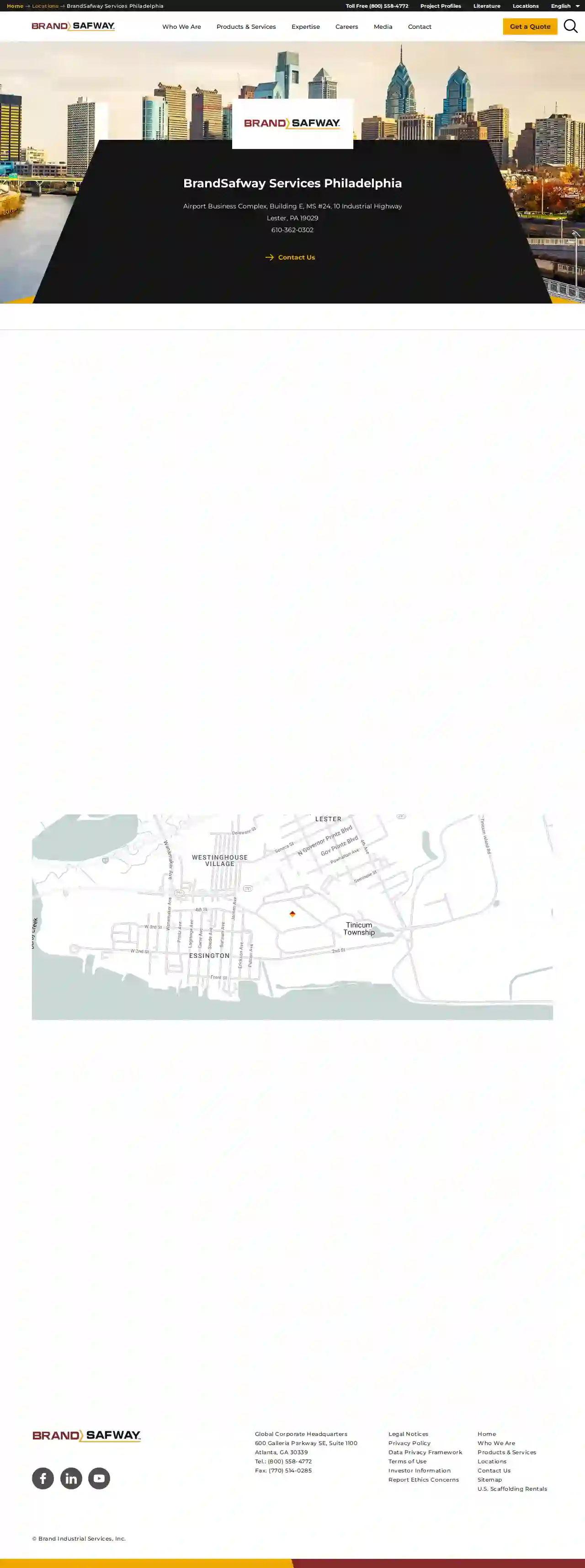
BrandSafway Services Philadelphia
49 reviews123 BrandSafway Blvd, Philadelphia, 12345, USBrandSafway is a leading provider of access solutions, including scaffolding, aerial work platforms, and forming and shoring. With a strong commitment to safety, quality, and customer satisfaction, BrandSafway offers a wide range of services tailored to meet the unique needs of clients across various industries. Their team of experienced professionals works closely with clients to understand their requirements and deliver customized solutions that enhance efficiency and productivity. BrandSafway is dedicated to providing innovative solutions that set the standard for the industry.
- Services
- Why Us?
- Accreditations
- Our Team
- Testimonials
Get Quote
BrandSafway Industries Pittsburgh
48 reviews123 Industrial Drive, Pittsburgh, 15222, USBrandSafway is a leading provider of access solutions, including scaffolding, aerial work platforms, and forming and shoring. With a strong presence in Pittsburgh, the company offers a wide range of services tailored to meet the specific needs of clients in the construction, industrial, and infrastructure sectors. BrandSafway is committed to delivering innovative solutions that enhance safety, efficiency, and productivity for its clients. The company's team of experienced professionals works closely with clients to understand their unique requirements and develop customized solutions that meet their needs and exceed their expectations. BrandSafway is dedicated to providing exceptional service, quality, and value to its clients, making it a trusted partner for businesses in Pittsburgh and beyond.
- Services
- Why Us?
- Accreditations
- Our Team
- Testimonials
Get Quote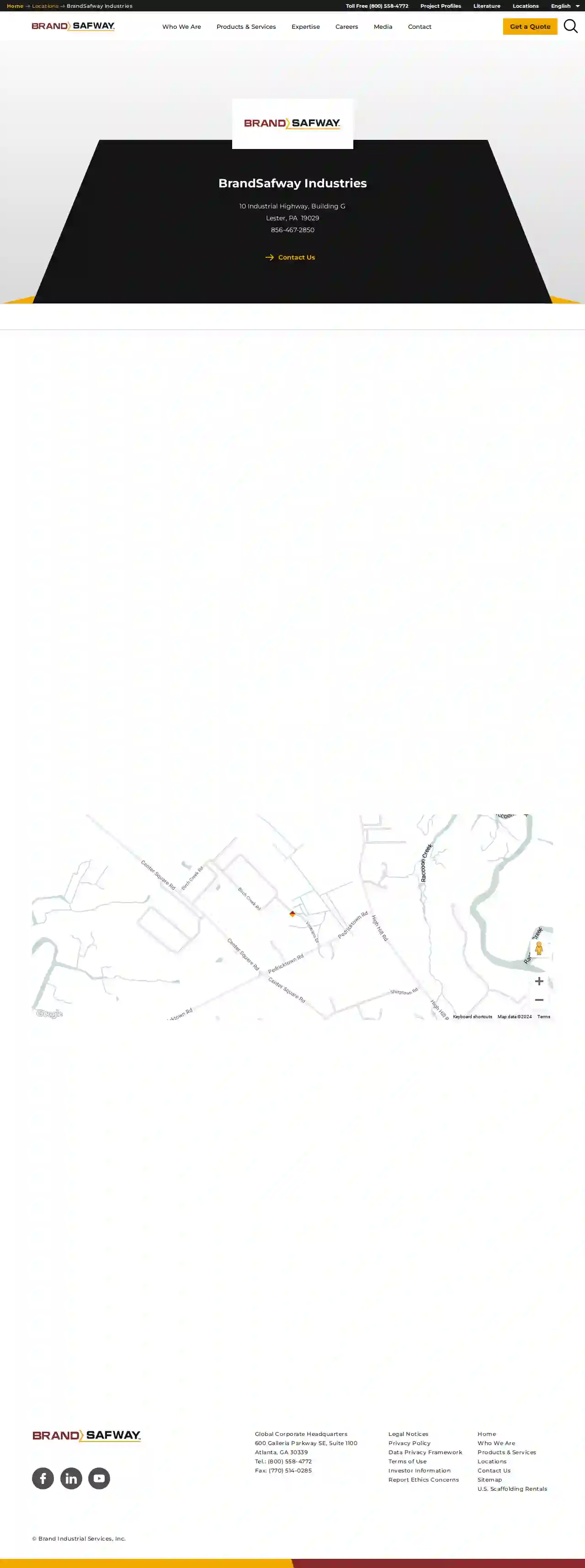
BrandSafway Industries
123 BrandSafway Blvd, Swedesboro, 12345, USBrandSafway is a leading provider of access solutions, including scaffolding, aerial work platforms, and forming and shoring. With a strong commitment to safety, quality, and customer satisfaction, BrandSafway offers a wide range of services tailored to meet the unique needs of clients across various industries. Their team of experienced professionals works closely with clients to understand their requirements and deliver customized solutions that enhance efficiency and productivity. BrandSafway is dedicated to providing innovative access solutions that ensure safe and efficient project execution.
- Services
- Why Us?
- Accreditations
- Our Team
- Testimonials
Get Quote
Over 2,353+ Scaffolding Companies in our network
Our scaffolding contractors operate in Luzerne and surroundings!
ScaffoldingHQ has curated and vetted Top Scaffolding Companies arround Luzerne. Find a top & trustworthy pro today.
Frequently Asked Questions About Scaffolding Companies
- Work at Height Regulations 2005: Covers all work at height and outlines the need for risk assessments, competent erectors, and safe equipment.
- Construction (Design and Management) Regulations 2015 (CDM): Applies to construction projects and requires planning for scaffolding safety throughout the project lifecycle.
- British Standard BS EN 12811: Sets standards for the design, manufacture, and testing of scaffolding components.
- NASC (National Access & Scaffolding Confederation) Guidance: Provides industry best practices and safety recommendations for scaffolding.
- Online Directories: Use specialized directories like ScaffoldingHQ to search for scaffolding companies in your area.
- Search Engines: Use Google or other search engines to search for 'scaffolding companies near me' or 'scaffolding rental [your location]'.
- Local Construction Associations: Contact local construction associations for recommendations.
- Word-of-Mouth Referrals: Ask friends, family, or colleagues for recommendations based on their past experiences.
- Experience and Expertise: Look for companies with a proven track record in similar projects, whether it's residential, commercial, or industrial.
- Licensing and Insurance: Verify that the company has the necessary licenses and insurance coverage to operate legally and protect you from liability.
- Safety Record: Inquire about their safety practices and training programs for their employees. A strong safety culture is crucial in scaffolding.
- Reputation and Reviews: Check online reviews and testimonials from previous clients to gauge their reliability and quality of work.
- Professionalism: Choose a company that communicates clearly, provides detailed quotes, and demonstrates a commitment to customer satisfaction.
- Project Height and Access: The height of the structure and the accessibility of the working area are primary considerations.
- Load Capacity: The weight of workers, materials, and equipment that the scaffolding needs to support.
- Project Complexity and Shape: The shape and complexity of the structure may necessitate specialized scaffolding configurations.
- Ground Conditions: The type of ground (soft, uneven, sloping) will influence the scaffolding foundation and support requirements.
- Duration of Use: The length of time the scaffolding will be needed can impact the choice of system.
- Budget: Different scaffolding types have varying costs.
What are the safety regulations for scaffolding in the USA?
How can I find scaffolding companies near me?
How do I find a reputable scaffolding company?
How do I choose the right type of scaffolding for my project?
What are the safety regulations for scaffolding in the USA?
- Work at Height Regulations 2005: Covers all work at height and outlines the need for risk assessments, competent erectors, and safe equipment.
- Construction (Design and Management) Regulations 2015 (CDM): Applies to construction projects and requires planning for scaffolding safety throughout the project lifecycle.
- British Standard BS EN 12811: Sets standards for the design, manufacture, and testing of scaffolding components.
- NASC (National Access & Scaffolding Confederation) Guidance: Provides industry best practices and safety recommendations for scaffolding.
How can I find scaffolding companies near me?
- Online Directories: Use specialized directories like ScaffoldingHQ to search for scaffolding companies in your area.
- Search Engines: Use Google or other search engines to search for 'scaffolding companies near me' or 'scaffolding rental [your location]'.
- Local Construction Associations: Contact local construction associations for recommendations.
- Word-of-Mouth Referrals: Ask friends, family, or colleagues for recommendations based on their past experiences.
How do I find a reputable scaffolding company?
- Experience and Expertise: Look for companies with a proven track record in your type of project, whether it's residential, commercial, or industrial.
- Licensing and Insurance: Verify that the company has the necessary licenses and insurance coverage to operate legally and protect you from liability.
- Safety Record: Inquire about their safety practices and training programs for their employees. A strong safety culture is crucial in scaffolding.
- Reputation and Reviews: Check online reviews and testimonials from previous clients to gauge their reliability and quality of work.
- Professionalism: Choose a company that communicates clearly, provides detailed quotes, and demonstrates a commitment to customer satisfaction.
How do I choose the right type of scaffolding for my project?
- Project Height and Access: The height of the structure and the accessibility of the working area are primary considerations.
- Load Capacity: The weight of workers, materials, and equipment that the scaffolding needs to support.
- Project Complexity and Shape: The shape and complexity of the structure may necessitate specialized scaffolding configurations.
- Ground Conditions: The type of ground (soft, uneven, sloping) will influence the scaffolding foundation and support requirements.
- Duration of Use: The length of time the scaffolding will be needed can impact the choice of system.
- Budget: Different scaffolding types have varying costs.